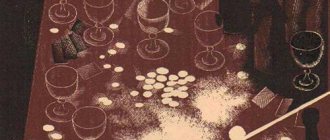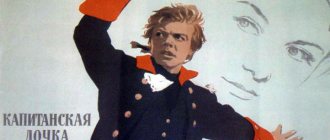- Essays
- On literature
- Pushkin
- The image of St. Petersburg in the works of Pushkin
Alexander Sergeevich Pushkin was one of the first Russian classics to reveal in his works the image of St. Petersburg, the cultural capital of Russia. It was in this city that the poet spent the best years of his youth, and for him St. Petersburg became an important source of inspiration.
Perhaps the main work of A. S. Pushkin, in which St. Petersburg is one of the main characters, is “The Bronze Horseman”. It is in this poem that the sun of Russian poetry writes about how two-faced and ambiguous the Northern capital is: “a lush city, a poor city.” In the introduction, the author praises Petrograd, admires its palaces, canals, and numerous beautiful buildings. However, the rest of the poem, which tells about the flood and the fate of the main character, sounds bitter and sad. Here A.S. Pushkin introduces the type of “little man” - the petty official Eugene, from whom Petersburg took away his beloved, the meaning of life, reason and even life. So, on the one hand, “Petra’s creation” is a majestic and beautiful city, on the other hand, it is cruel and hypocritical.
Petersburg is equally unfavorable to a simple and sincere person in the story “The Station Warden.” The city absorbs Dunya, the daughter of the main character, Samson Vyrin, and he, trying to save her, encounters a deceptive, vile, dirty St. Petersburg. The hussar Minsky who stole Dunya is a handsome and well-dressed young man, but the appearance and personal qualities of the hero are completely opposite: Minsky shows his cruelty and callousness by driving Vyrin out into the street. A.S. Pushkin shows Petersburg as a place of lies and debauchery.
Petersburg appears mystical and even hostile to the reader in the story “The Queen of Spades.” The capital is filled with absurdity and madness; the inhabitants of the city are also going crazy, doing the most base and inhumane acts - like, for example, Hermann, who wants to know the secret of the three cards.
The city is shown to readers in a slightly different way in the novel in verse “Eugene Onegin”. In the first chapter, the poet extols St. Petersburg, writes about the Decembrists; The northern capital is becoming a stronghold of freedom of thought and high aspirations. But then Alexander Sergeevich, as part of the Russian intelligentsia, talks about the life of the aristocrats of St. Petersburg. The day of the capital's nobleman passed completely idlely, while the night was the time of ball and masquerade. In general, a St. Petersburg aristocrat is a person, first of all, bored, living without a goal and spiritually decaying - the poet sought to create exactly such an image.
Thus, it was A. S. Pushkin who created the controversial literary image of the Northern capital, on which many Russian classics subsequently relied: N. V. Gogol, F. M. Dostoevsky and others.




